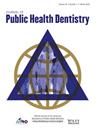Parental perceptions of an oral health promotion program in early childhood education and care settings: A qualitative study
Abstract
Objectives
Early Childhood Caries is a global health problem. The Bright Smiles Bright Futures (BSBF) program seeks to equip educators, children, and parents with skills and knowledge about oral health promotion habits early in life. The aim of this study was to examine parental perceptions of the BSBF program and identify key facilitators and barriers for its implementation.
Methods
Twelve mothers of children who participated in the BSBF program in five Early Childhood Education and Care (ECEC) settings in NSW, Australia were recruited in this qualitative study. Data were collected via focus groups and interviews, transcribed verbatim and coded to categorize for inductive thematic analysis.
Results
Five major themes emerged: Promoters of the BSBF oral health program, barriers to the BSBF oral health program implementation and participation, online resources, impact of the BSBF oral health program, and strategies for enhancing the BSBF oral health program. While participants reported that the program encouraged their children's toothbrushing, they found issues with the program's materials, ECEC center attendance, and communication about the oral health program with their children. The program improved message retention, attitudes, routines, and family perceptions toward oral health. Participants recommended oral health literacy, changed delivery formats, increased dental access, and inclusion of interactive elements to enhance the program.
Conclusions
The findings from this study provide insight to improve parents' experiences and engagement in oral health promotion. This can help to raise awareness of the importance of child oral health among policymakers, healthcare professionals, and the public to inform public health policy discussions.

 求助内容:
求助内容: 应助结果提醒方式:
应助结果提醒方式:


